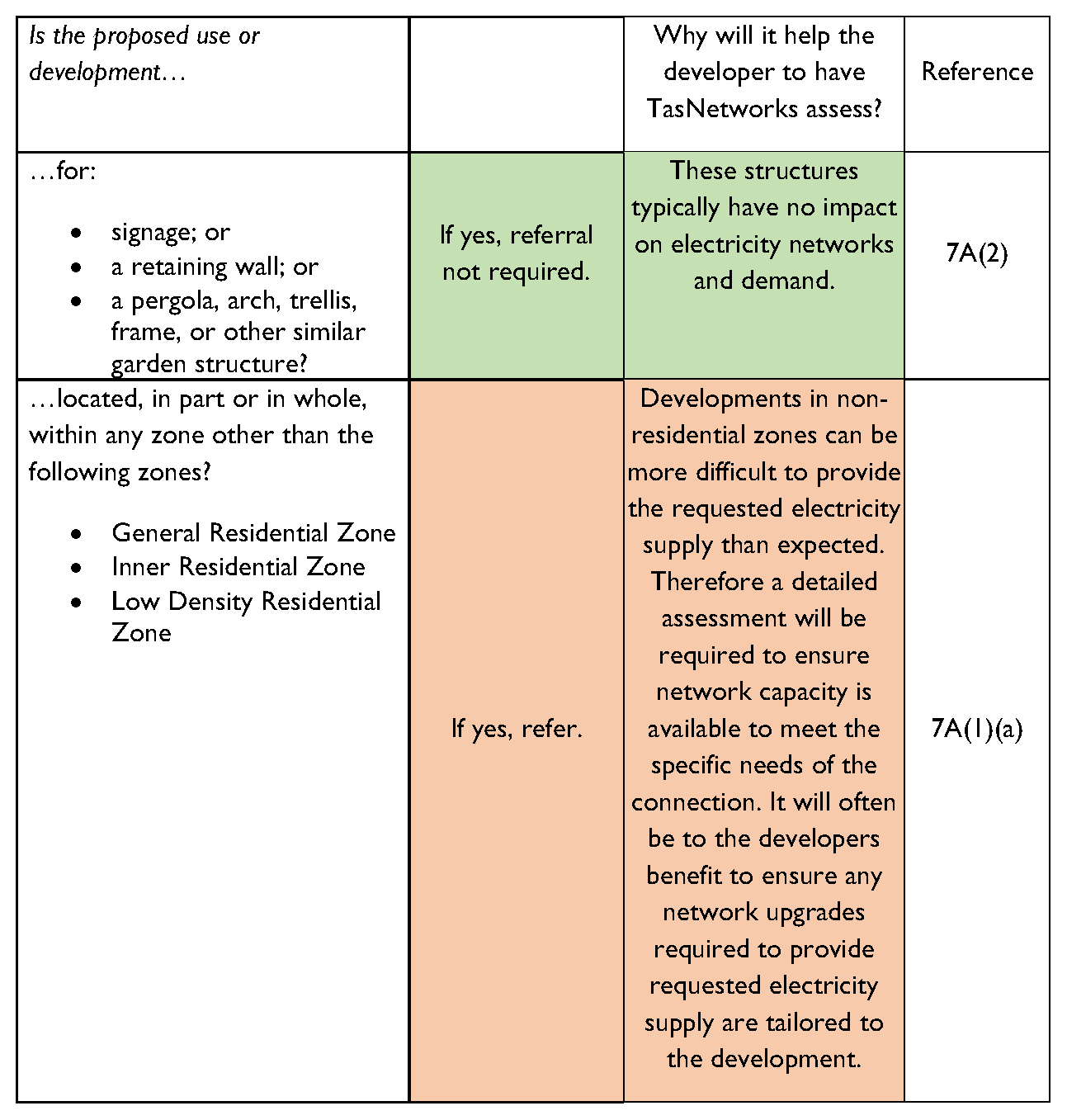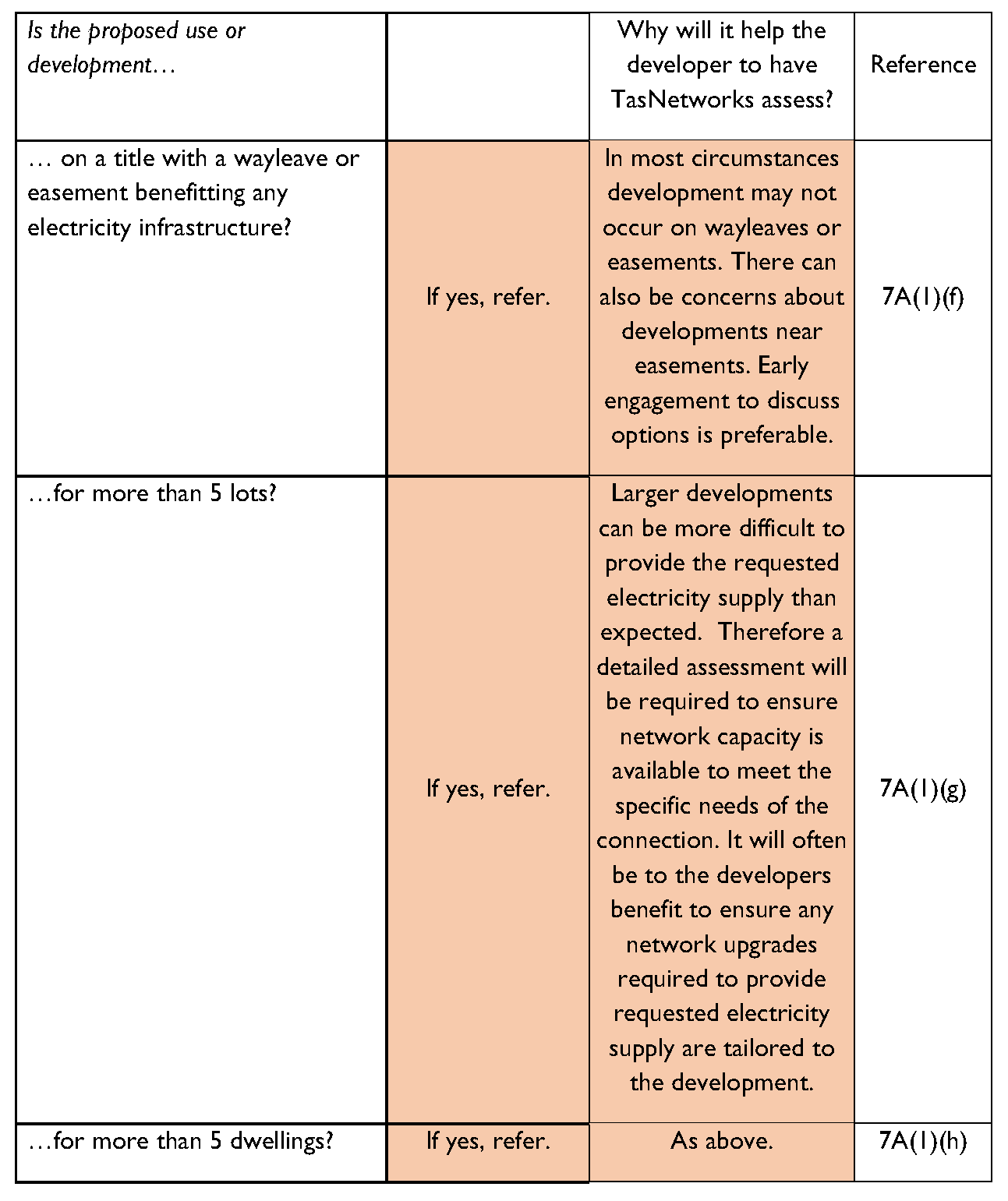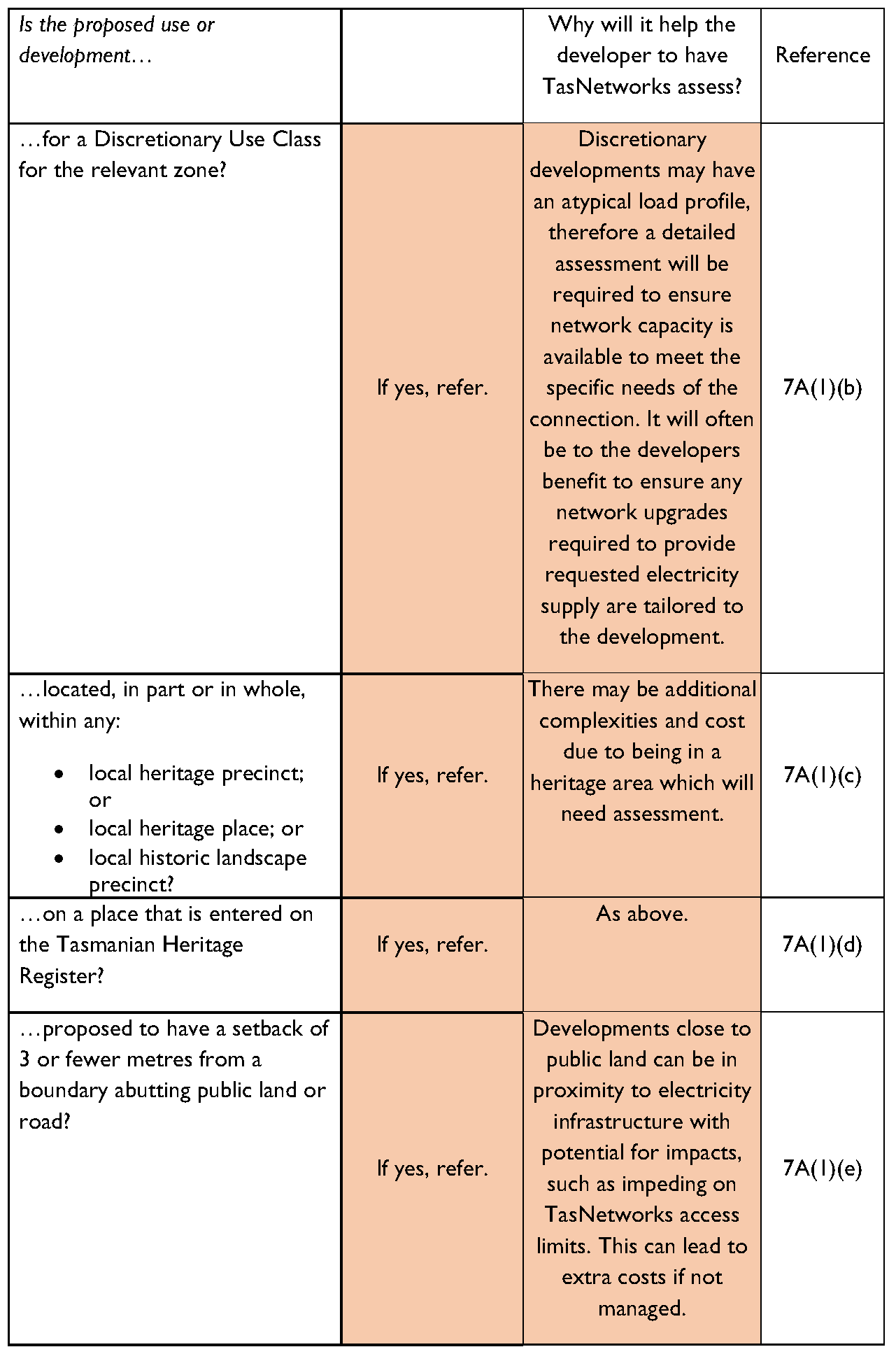Advice to Councils
Renewables, Climate and Future Industries Tasmania
(ReCFIT)
ReCFIT have released the below Fact Sheet on Electricity Supply Industry Amendment Regulations 2022.
Enquiries related to these changes should be directed to Renewables, Climate and Future Industries Tasmania, C/- Secretary@treasury.tas.gov.au
ReCFIT FACT SHEET
Electricity Supply Industry Amendment Regulations 2022
Electricity connections may be more complex than anticipated. For this reason, TasNetworks prefers early engagement with anyone requiring an electricity connection. Early engagement helps to avoid delays and unnecessary costs when establishing electricity connections.
It was for this reason that in 2020, as part of the Government's Red Tape Reduction initiative, sections 44K-44O were inserted into the Electricity Supply Industry Act 1995 (ESI Act).
These sections were designed to ensure that TasNetworks’ customers can be connected to its electricity network in the most practicable and efficient way.
Specifically, section 44L(1) of the ESI Act requires planning authorities to notify TasNetworks of applications for permits for uses or developments where it is likely that -
| (a) | works would be required to be carried out by TasNetworks before the development or use may occur; or |
| (b) | the use or development would adversely affect TasNetworks’ operations. |
Section 44K identifies what the relevant notice must contain, and section 44M identifies what TasNetworks must provide to the planning authority in response.
However, not all electricity connections are as complex as others; and section 44L(2) of the ESI Act states that the requirements of section 44L(1) do not apply to applications for permits that the planning authority refuses to grant, or to a class of applications that is prescribed.
That class of prescribed applications is in the Electricity Supply Industry Regulations 2018 (ESI Regulations). Specifically, it is in Regulation 7A.
Regulation 7A was inserted into the ESI Regulations by the Electricity Supply Industry Amendment Regulations 2022, and it came into force on 17 August 2022.
Regulation 7A can be used as a checklist by planning authorities to determine when not to refer planning applications to TasNetworks.
Specifically, Regulation 7A(1) states that planning authorities do not need to notify TasNetworks about applications for permits in relation to certain developments or uses if -
| (a) | the use or development is inside a General Residential Zone, an Inner Residential Zone, or a Low Density Residential Zone, all within the meaning of the Tasmanian Planning Scheme; and | |
| (b) | the use or development is in a Permitted Use Class specified in the applicable Use Table in the Tasmanian Planning Scheme; and | |
| (c) | the use or development is outside any local heritage precinct, local heritage place or local historic landscape precinct, all within the meaning of the Tasmanian Planning Scheme; and | |
| (d) | the application is for a use or development of a place that is not entered on the Tasmanian Heritage Register, within the meaning of the Tasmanian Planning Scheme; and | |
| (e) | the use or development has a setback more than 3 metres from a boundary that abuts public land or a road, both within the meaning of the Tasmanian Planning Scheme; and | |
| (f) | the use or development is on a title that is unencumbered by a wayleave or easement benefitting any electricity infrastructure – |
unless the application is for –
| (g) | a subdivision of more than 5 lots; or | |
| (h) | a development for more than 5 dwellings. |
Similarly, Regulation 7A(2) states that planning authorities do not need to notify TasNetworks about applications for a permit for:
| (a) | signage; or | |
| (b) | a retaining wall; or | |
| (c) | a pergola, arch, trellis, frame, or other similar garden structure. |
A table for use by planning authorities is attached below.



